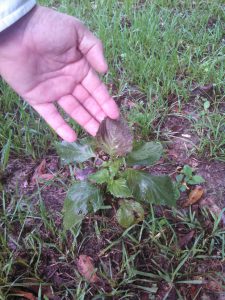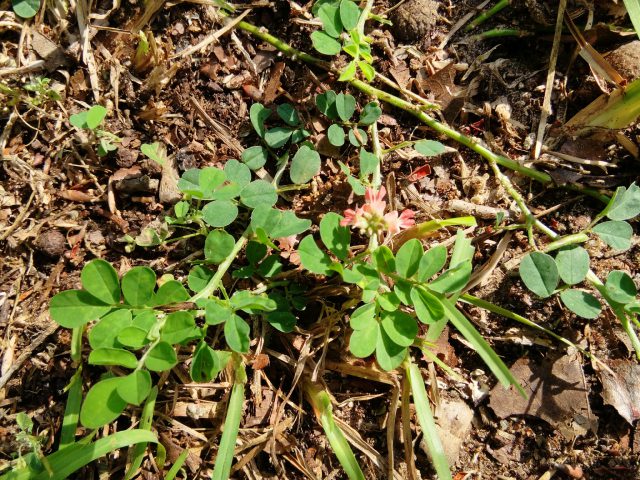Spring is a good time to walk your pastures to scout for toxic weeds. Summer pastures are just greening up, but are still short, and warm season weeds are just beginning to pop up out of the ground. In almost every case, it is much easier to kill small weeds as young plants, than to wait until summer when they are more mature, established plants.
What makes a plant toxic to livestock?
Certain plants naturally contain chemical compounds that are poisonous to animals. Certain conditions can also cause plants to accumulate toxins that can lead to illness or even death when consumed. The degree of relative danger of toxic plants depends on plant prevalence, toxicity, and palatability. Some toxic plants are acutely toxic, meaning symptoms occur immediately after consumption. Other plants, cause chronic toxicity with prolonged exposure. These symptoms occur as toxins slowly accumulate in the animal from ongoing consumption. The symptoms of toxic plant poisoning in livestock can also vary greatly. Some plants just make the animals uncomfortable or sick while others result in death.
Animals do not normally eat toxic weeds when adequate fresh forage is readily available, or is sufficiently supplied in the form of hay. Late fall and early spring, when both pastures and hay are in short supply, are the times of the year when livestock poisoning are more common. Toxic weeds can also be baled in with hay, and be accidentally fed to livestock . Overgrazing pastures can lead to the deadly combination of increased weed populations and hungry animals resulting in toxic plant consumption. Introducing naive animals to new pastures that have toxic plants can also lead to poisoning, as these animals graze unfamiliar plants.
A few plants are palatable to livestock, such as red maple and cherry laurel trees, that become toxic when the leaves wilt. While uncommon, there are situations such as after a storm or when cleaning out fence rows, when livestock gain access to large limbs or tree piles with wilting leaves. Some weeds can become toxic following fertilization, if they accumulate nitrates in the leaves. Also, during drought, toxins can concentrate in plant tissue causing them to become acutely toxic to livestock. Even herbicide applications can cause plants to accumulate toxins and, at the same time, become more palatable to animals.
Examples of common toxic plants in the Northwest Florida area include:
- Pokeweed or Pokeberry – results in gastrointestinal issues (cramping, diarrhea, and convulsions)
- Oleander – extremely toxic plant that can poison both livestock and humans in just a few hours
-
Bracken fern – is a native plant that contains an enzyme which inactivates Vitamin B1 over time
- Cherry Laurel – affects the blood of the animals when wilted leaves are consumed
- Lantana – affects the skin by making animals hypersensitive to sunlight
- Coffee Weed – affects skeletal muscles, kidney, and liver
- Black nightshade – causes irritation of the mouth and intestines
- Perilla mint – affects the respiratory system
- Showy crotalaria – affects the liver
- Creeping indigo – wide range of non-neurological to neurological symptoms
This is a relatively short list of common toxic weeds in the Panhandle. There are a number of resources available to learn to identify them, and how they affect livestock.
-
Download: Poisonous Plants of the Southeastern United States
-
You can purchase the UF/IFAS pocket ID card deck that provides identifying characteristics for 35 common poisonous pasture weeds to carry with you out in the field to compare with plants you see: Poisonous Pasture Plants of Florida
-
Dr. Dennis Hancock, UGA Extension Forage Specialist developed a YouTube video series called Plants that are Poisonous to Livestock with excellent descriptions of common toxic pasture weeds:
-
Part 1: Introduction, Black Cherry and Prussic Acid
-
Part 2: Black Locust, Brackenfern, and Buttercup
-
Part 3: Castor Bean, Chinaberry, and Cocklebur
-
Part 4: Dallisgrass Ergot, Ground Cherry, and Hemp Dogbane
-
Part 5: Horsenettle, Jimsonweed, and Johnsongrass
-
Part 6: Milkweed, Oleander, Perilla Mint, & Poison Hemlock
-
Part 7: Pokeweed, Rhododendrons, Azaleas, Sesbania, Sicklepod
-
Part 8: Sneezeweed, Nitrate Levels, Toxicosis, & Conclusion
-
Livestock poisonings from grazing toxic plants are relatively rare, but it is important for livestock owners to become unfamiliar these plants and the conditions that make them toxic. For help identifying toxic weeds in your pastures, and for weed control recommendations, contact your local extension agent.
- Field Days are for Education– Recap of the WFREC 2025 Corn & Soybean Field Day - July 25, 2025
- Spray Drone Regulations - July 16, 2024
- 2023 WFREC Crop Variety Trial Results - February 2, 2024


